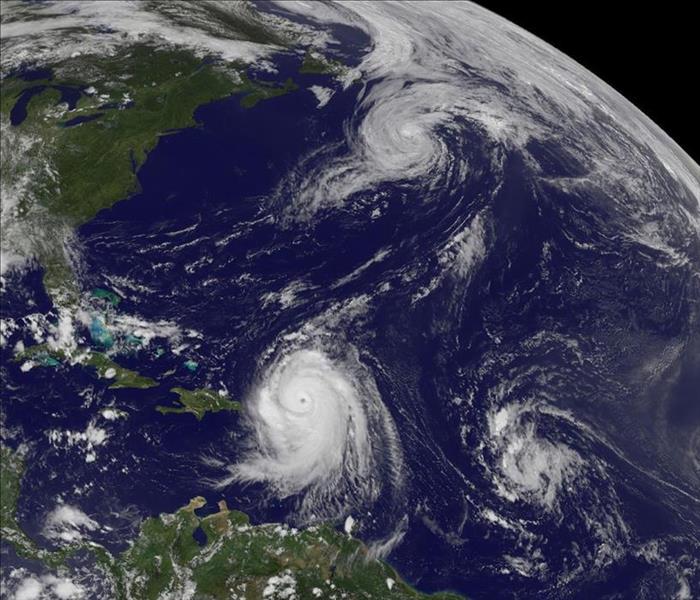How Does a Hurricane Form?
7/5/2022 (Permalink)
Anyone who’s experienced one before knows that hurricanes can be one of the most damaging and dangerous storms that you can have in the U.S. While you may already know this, and maybe when to most expect them to occur, how familiar are you with the process of how hurricanes form? Knowing what causes hurricanes can help you to better prepare and keep your family safe during these severe weather events.
Hurricanes and other tropical storms form in the same way. Out in the ocean, near the equator where the water is warm. When the ocean water evaporates this moist air rises, as it goes higher and cools it condenses into water droplets, which is how storm clouds are created. The winds over the Atlantic Ocean are very strong and as they blow across the waters, when combined with these storm clouds, they can begin blowing into a circular pattern. This is the beginnings of a tropical cyclone. These cyclones have four stages of growth ending at a hurricane.
1) Tropical Disturbance – This is characterized by a mass of storm clouds that has begun to pick up circulation and a slight potential for damage. Winds in a tropical disturbance do not exceed 24mph.
2) Tropical Depression – Once wind speeds have reached between 25-39mph a cyclone depression can form. As warm air rises from the storm and cools, this release of heat causes the top level of storm clouds to warm. This increases air pressure and shifts the winds outward from the center of the storm. As the winds move away and the air pressure drops, more warm air from the ocean’s surface rises. As this cycle continues the storm begins to spin faster and increase in wind speed.
3) Tropical Storm – Past 39pmh, this is now considered a tropical storm. The winds are spinning fast enough now that the clouds start to gather into the telltale circular shape we’ve all seen on the weather channel. This is when a storm is given a name. These storms can grow quickly and are definitely a sign that you should begin storm preparations should you find one is forecasted to head your way.
4) Hurricane – Once a tropical storm reaches 74mph wind speeds it is considered a hurricane. These storms are typically around 300 miles wide but can grow vastly larger. The largest to date is Hurricane Sandy which reached as wide as 1,150 miles or about half the length of the east coast.
Now that you know how these hurricanes form, you’ll hopefully be able to better understand how to best keep your family safe during these storms. Our SERVPRO of Chesterfield and SERVPRO of Tri-Cities, Plus is a proud member of the SERVPRO Disaster Recovery Team. With strategic placement all over the United States the SERVPRO Disaster Recovery Team is equipped to help with any size disaster and has participated in the recovery efforts in storms like Hurricane Katrina, Harvey, and Sandy. We’re here to help get you and your family back on track after a natural disaster.






 24/7 Emergency Service
24/7 Emergency Service
